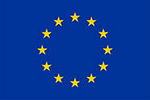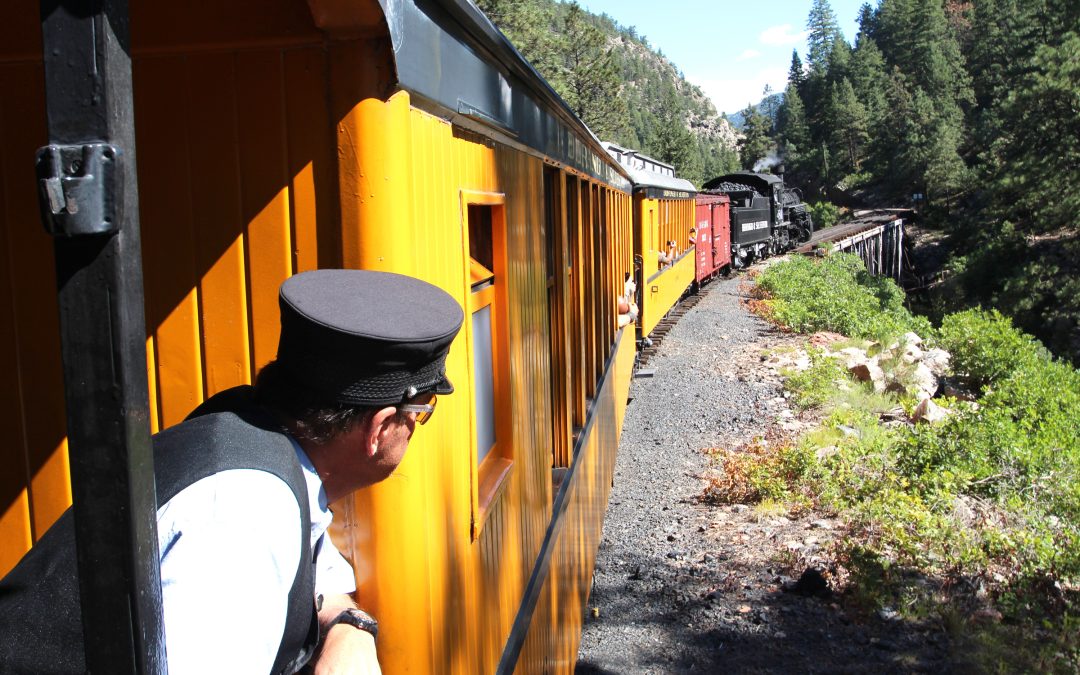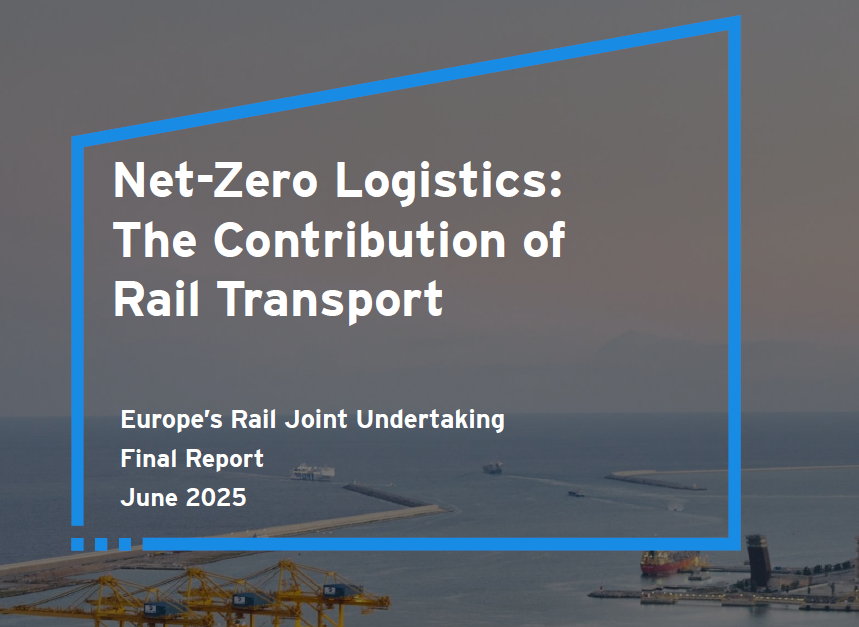Europe must take decisive steps to simplify and modernise its rail systems to strengthen competitiveness,...
To benefit the rail sector and its final users, our new Flagship Project 4 (FP4) Rail4EARTH, worth EUR 95.1 million with 71 partners, is ready to provide new innovative products and services that will improve the sustainability of the European transports landscape. In this article FP4 Rail4EARTH Coordinator, Laurent Nicod from our Founding Member ALSTOM explains what to expect from the project.
Tell us what is encompassed in ‘Sustainable and green rail systems’ and how will the concept improve rail systems in Europe?
The concept of sustainable and green rail systems focuses on providing new innovative products and services based on leading edge technologies to minimise the overall energy consumption and environmental impact of the railway system. Like so we ensure rail transportation becomes healthier, more attractive and resilient towards climate change at a reduced total cost of ownership. This entails providing solutions which will improve rail systems in Europe. To mention essential developments like:
- A more integrated and standardised Rail Power Smart Grid, integrating greener energy, cutting the peak of its consumption and allowing for a better control and management.
- Better energy management at stations, providing more intelligent and integrated control systems and allowing for a higher energy flexibility and resilience of the Electrical Smart Grid.
- Technologies for a more sustainable and extreme hazard resilience design of railway infrastructures and rolling stock, oriented towards the whole life cycle of assets and supported by Digital Twin developments.
- Platforms for the efficient implementation of circular economy solutions in the railway sector and for sharing accurate environmental data.
- Guidelines for the design of modular stations
How will FP4 Rail4Earth ensure the whole rail system becomes greener and smarter? Which rail sub-systems is the project addressing and how?
The activities in FP4-RAIL4EARTH are covering rolling stock, infrastructure, stations and all of their related sub-systems (traction, bogies, brakes, energy storage systems, HVAC). This holistic approach will ensure that the whole rail system becomes greener and smarter. For instance, to give you a better overview, the FP4-Rail4EARTH consortium is working on solutions addressing energy and CO2 savings, including alternative solutions for rolling stock, such as transitioning from diesel trains, shift from road to rail, as well as holistic approaches for rail infrastructure, stations, buildings, considering the entire life cycle. We are also looking at circular, sustainable and resilient solutions for the entire system that will make it healthier, safer and more attractive for final users. The project will also look at how to best improve the electro-mechanical components and sub-systems for the rolling stock, including airless components. A part of the project is to also look at digital twin developments and produce standards and norms of railway hardware or software assets.
What are the three main objectives of the FP4 Rail4Earth project and how will they facilitate a greener and smarter rail system in Europe?
The main objectives of FP4-Rail4EARTH are to significantly progress on several groups of Key Performance Indicators (KPIs) on different fields, with a baseline fixed on 2022 performances, tackling technical, environmental, economic and standardisation aspects. The progress made during the project will be quantified once a year with two possible approaches – either through standards that are already adapted to quantify the gains of the innovations, or through the specific contribution towards standardisation, in case the relevant standards do not exist. In the latter case, the project partners will define commonly agreed methods to quantify the concerned KPIs. This will also contribute to the integrated KPIs approach that EU-RAIL will develop and implement. Consequently, leading to a two-step approach – at project level as the first layer, which will then feed the EU-RAIL KPIs as a second layer.
It is also essential to point out that the FP4-Rail4EARTH project will facilitate a greener and smarter rail system in Europe through an impact that is mainly spread across three levels:
- Technological impact: bringing new ways of solving technical questions, for example, lightweight vehicles, by introducing new materials and designs, manufacturing via 3D additive printing in structural parts of the trains.
- Economic impact: providing soon after the end of the project new products which answer the needs of sustainable railway transport at affordable Life Cycle Costs (LCC) and suitable business rules.
- Societal impact: reducing all negative effects of transport systems on human health and improving sustainability in terms of CO2, energy, noise, particle matters, re-useability, recyclability of parts and materials from old products into new products.
To go beyond the immediate scope and duration of the project, our results will be integrated by the European transport authorities and used to prepare future roadmaps of investments, both in refurbishment or new trains, infrastructure or stations. In parallel, industrials will prepare their pathways to change the demonstrators into products.
What are some the main challenges the project will have to overcome?
The main challenge of the project is to properly prepare, in parallel to the new technical solutions, the normative environment to support the innovations and their viability, while looking at the political and economic business rules, ensuring favourable conditions to rapidly diffuse these new and highly sustainable solutions to the European market.
On the specific work dedicated to preparing the railway systems towards climate change, the challenge is to find available climate experts able to predict the nature of climate hazards, such as extreme temperatures, heavy rains, storms, floods, as well as their amplitude, location, and frequency. This is to ensure the railway engineers find solutions following probable and accurate diagnostics of potential hazards. To complete this work and to reduce the impact on the climate, we will also analyse the existing hydrogeological, wind and solar conditions in the areas of planned station construction sites, analyse existing solutions and produce a feasibility study. We will also look at a comprehensive detailed design for a heat source system, which will automatically change the scope of “heat and cold” work, as well as external and internal heating networks.
Concerning digitalisation, the capture of large digital data, their real-time integration in the digital twins and their use to improve the environmental performances of the holistic system will continue to be, especially in a context of cyber-security threat, a technical, legal and economic challenge.
For more details, we propose you refer to the Europe’s Rail Multi Annual Work Programme.
When can we expect to see the first results coming from the project and what will these results cover?
The first results are coming very soon. In December 2023 we expect to publish eight technical reports covering alternative propulsion based on Energy Storage Systems (ESS) and hydrogen, preliminary developments for Railway Energy Hubs and Smart Green Railway Stations, as well as development of electromechanical systems supporting air-less trains. We will also publish reports on the development of high-performance bogies, eco-friendly HVAC, rolling stock, on board air quality developments and sustainable interiors, knowledge and opportunities.
What are the demonstrations expected to be carried out in the project and is there a calendar for those interested?
In total we will have a high number of 38 demos envisaged to be executed at the end of the project, with 2025 being a key year. FP4-Rail4EARTH will demonstrate all the expected results through its six Sub-Projects described below, offering the necessary holistic approach.
- Alternative energy solutions for the rolling stock, 6 demos
- High performance Batteries Electric Multi-Unit (BEMU) train – TRL6/7 in 2025;
- Hydrogen hybrid trains with test of heavy-duty inspection vehicle and loco for freight-passengers – TRL4/5 in 2025
- Sub-urban catenary trains with on board Energy Storage Systems (ESS) – TRL 3/5 in 2025;
- Auto adaptive train energy consumption to various services situations.
- Energy in rail infrastructure and stations, 7 demos
- H2 refueling station – TRL6 in 2025;
- Smart low consumption electrical infrastructures – TRL6 in 2025;
- Smart stations as energy hubs, TRL5 in 2025;
- Methodologies/guidelines for the optimal design or rehabilitation of stations including modularity and carbon footprint reduction- TRL5/6 in 2025.
- Sustainability and resilience of the rail system, 3 demos
- Software tool specification on European climate variables usable for railway assets Reports – TRL5 in 2025;
- Noise indicators, simulation tools and development of optimised components for noise and vibrations minimisation – TRL6 in 2025;
- Software tools and indicators to promote eco-design, assess environmental performance/standardised reporting of the environmental impacts of the rail sector- TRL5 in 2025.
- Electro-mechanical components and sub-systems for the rolling stock, 18 demos
- (Airless) electro-mechanical braking system, pantograph and suspensions – TRL7 in 2025;
- Optimised (energy, weight) motors and gearboxes – TRL in 2025;
- Replace hydrofluorocarbon refrigerants by HVAC system using green refrigerants or new cooling technologies – TRL6 in 2025;
- Enhanced experimental and numerical methods on train aerodynamic optimization – TRL6 in 2025.
- Healthier and safer rail system, 2 demos
- Healthier HVAC – air quality improvement, contaminant removal, reduced virus/bacteria lifetime – TRL7 in 2025.
- Train Attractiveness, 2 demos
- Reinforce train attractiveness via on-demand comfort for users – TRL5/6 in 2025;
- Reinforce the facility to adapt rolling stock interiors to support the increase of capacity of the rolling stock, targeting TRL5/6 in 2025.
Can you explain how the project contributes to the European Green Deal and the Sustainable and Smart Mobility Strategy and how will it improve the overall transport landscape in Europe?
FP4-Rail4EARTH is contributing to the European Grean Deal and the Sustainable and Smart Mobility Strategy through various activities. We target zero local CO2 emission trains and refuel and recharge infrastructures, aiming at multi-modal H2 Refueling Stations wherever applicable. Moreover, additional harmonisation and standardisation work, including simplification of certification, will be done to simplify European solutions allowing interoperable trains and lower costs for a quicker deployment. Batteries (BEMU long range autonomy) and H2 hybrid trains with low LCC are needed, as well as new regenerative energy services. New environmental aspects, circular economy and recyclability will be taken into account in these new solutions, from design stage to final demonstrations. Sub-urban catenary trains with on board ESS (Energy Storage System) will be studied and demonstrated to increase the transport service robustness in large urban areas, specifically the mass transit system where a single power supply weakness or even failure has an unacceptable impact on punctuality. Energy autonomy is needed for the comfort and safety of passengers or for traction to a nearby station. A powerful ESS onboard is likely also to avoid the use of mechanical braking which can lead to energy loss, particulate matter emissions and high maintenance costs. It is also a cost-efficient solution when land area is missing in cities, strengthening substations to power more trains. Moreover, it allows infrastructure power peak shaving reducing the energy bill.
How is the work done in the Shift2Rail projects dedicated to sustainability facilitating the work of FP4 RAIL4EARTH and are there any concrete examples?
A lot of the work done in Shift2Rail feeds our FP4 Rail4Earth project. For instance, Shift2Rail’s Innovation Programme 1 has undertaken the development of the new generation of traction drives using silicon carbide technology, achieving TRL 7 in 2022. It also generated a carbon free mobility roadmap from 2022 to 2030 detailing the work required to develop a credible alternative for diesel traction, meeting technical performance requirements at acceptable costs. Basic research on battery and hydrogen powered rolling stock was covered, including infrastructure and operational aspects for retrofitting existing regional trains.
For instance, Innovation Programme 5 studied last mile propulsion and next generation energy efficient propulsion systems for freight vehicles, as well as a standardised methodology for the estimation of energy consumption by simulation and measurement, enabling the standardised specification of energy efficient railway systems and generic energy labelling for rolling stock.
Regarding Hydrogen, a “Study on the use of fuel cells and hydrogen in the railway environment” delivered a roadmap for the future R&I activities.
Innovation Programme 3 studied efficient energy management through the catenary for AC power supply, and energy management on the catenary for DC traction. These studies include modelling and simulation based on theorical and ideal operation of the system and its components and within their framework. A first set of specifications of the components needed was done and the feasibility for industrial development has been carried out.
Concerning energy storage, development of the storage technologies and their implementation into the railway system for the specific applications of energy recovering and traction power was also carried out.
Shift2Rail also developed many noise and vibration activities in projects such as FINE 1 and 2, DESTINATE, TRANSIT and SILVARSTAR, providing methodologies and tools for predicting noise and vibration performance on system level including rolling stock infrastructure and its environment, ranking and characterisation of each contributing source to optimize cost benefit scenarios and comfort.
Eco-friendly HVAC units with CO2 as natural refrigerant have been simulated, developed and tested in real operation within Shif2Rail projects, such as PINTA-3.
All the aforementioned initiatives are being considered by FP4-Rail4EARTH and are expected to facilitate the work of the consortium partners.
How is FP4 Rail4Earth interacting with the other EU-Rail FPs and the System Pillar?
In the framework of Europe’s Rail integrated programme, establishing a good cooperation and coordination with the other relevant Flagship Areas (FAs) is very important. The FP4-Rail4EARTH consortium is regularly searching for complementary discussions and synergies. More precisely we are working with FP1 and FP2 on energy management via traffic regulation interfaces with trains/DAS/C-DAS and with FP3 on Digital Twins used for predictive maintenance purposes. Other potential synergies are also discussed with FP5 which focuses on Green Rail Services and FP6 targeting regional innovative services to revitalise capillary lines.
We also foresee several joint activities between the FPs and the System Pillar technical concepts/architecture. The System Pillar aims to, when relevant, provide to the Innovation Pillar the set of guidelines aligned with the System Pillar work, to ensure that research is targeted on commonly agreed and shared customer requirements and operational needs, compatible and aligned to the defined system architecture. Like so, we interact with the System Pillar where new technologies or processes mean that innovations can motivate a change in approach, as well as deliver detailed specifications and requirements.
By cooperating whenever necessary with the System Pillar and other sector initiatives through a continuous exchange between the technical management team, the high-level architecture of the Rail System developed in the System Pillar will be ensured and taken into account especially in the first phase of the project. In return, the results from the Flagship Project will be respected and used in the System Pillar and by other initiatives.
In this way FP4-Rail4EARTH will contribute to the implementation of the Single European Railway Area and to the development of standards that will be used later by the railway market.
Why is the work done in this project important for the final users and especially passengers?
The ambitions are numerous: the decarbonisation of diesel trains (with battery trains targeting 200km of autonomy), noise (-3 to -8dB targets for specific use cases) and vibration reductions, energy & CO2 savings (up to -30% target in specific use cases), circular economy reinforcement, resource consumption reduction, resilience to climate change, pandemics and attractiveness of passenger trains. These technical and environmental ambitions are at the heart of the project and are developed whilst considering the reduction of the Life Cycle Cost (LCC) by-5-10% for specific use cases including externalities costs.
The project is identifying the precise needs of rail operators, including implicitly the European public policies of sustainable transport and is directly improving three of the environmental objectives of climate change mitigation, adaptation and transition to a circular economy. It provides the needed scientific and technical solutions via the development and setting-up of demonstrators of new solutions increasing drastically the environmental performances of the holistic railway system.
These new solutions are proposed while verifying that they have viable economic models ensuring a rapid commercialisation for the benefit of European citizens. Beyond the fact that FP4-Rail4EARTH will provide even more sustainable solutions, the project will also strengthen the competitiveness of the European railway industry. All the project activities are at the heart of benefiting the final users and the passengers.
















